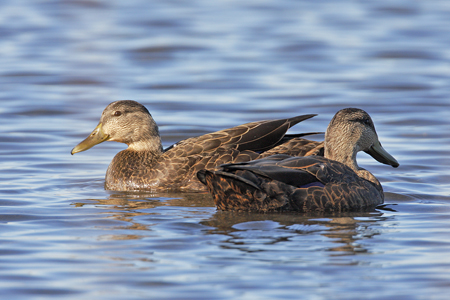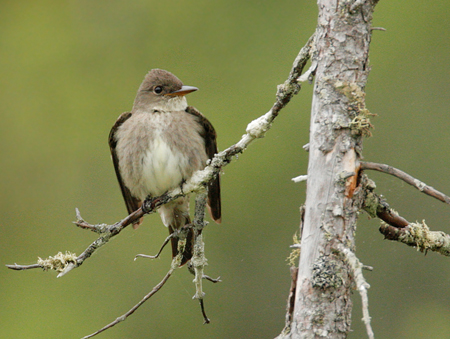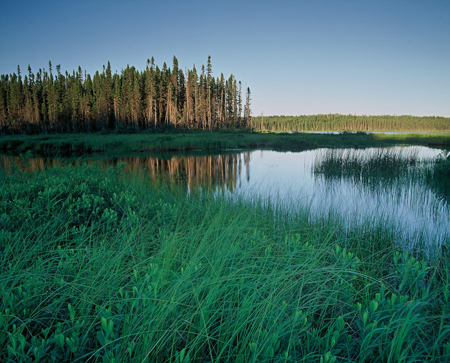
American Black Duck.
Credit: Jeff Nadler
Yesterday several prominent conservation and wildlife organizations published The State of Canada’s Birds, a comprehensive assessment of population fluxes among birds within each major ecoregion of Canada. Released by the North American Bird Conservation Initiative (NABCI-Canada), under the leadership of Environment Canada, Bird Studies Canada, Ducks Unlimited Canada, Nature Canada, the Nature Conservancy of Canada and Wildlife Habitat Canada, the report compiled 40 years worth of counts, trends and statistics on Canada’s bird populations.
The findings should come as no surprise. Overall, Canadian birds are in decline by an average of 12 percent. This steady decline can be mostly attributed to two threats: habitat loss and degradation (including less visible changes like increases in toxins in habitats) and the gradual effects of climate change.
Of course the overall average is not indicative of every bird. Some birds, particularly waterfowl and raptors, have seen promising increases as a whole over the past few decades. The report notes that successful international waterfowl management programs and wetland restoration efforts throughout North America have proven to be a huge boost for waterfowl, while raptors have benefitted from laws prohibiting toxic pesticides like DDT, which just a few decades ago was devastating many raptors and fish-eating birds and their young.

Aerial insectivores, including the Olive-sided Flycatcher, are struggling.
Credit: Jeff Nadler
On the flip side, many birds are not doing so well. Aerial insectivores, such as swallows and flycatchers, along with grassland birds and shorebirds have fared far more poorly. The reasons behind such declines vary by individual species, however for many species climate change is likely making an impact. Bird migrations are carefully timed with the seasons and earlier onset of warm temperatures in spring spurs insect blooms to happen earlier. When long-distance migrant birds arrive at their breeding grounds they may have already missed the peak of insect abundance that is so important for feeding newly hatched young.
Of birds that regularly occur and breed in the boreal forest—our particular area of focus—there are a number of species of particular concern. The Canada Warbler, Oliver-sided Flycatcher, and Common Nighthawk (all major boreal breeding species) are all listed as Threatened under Canada’s Species at Rsk Act. While Rusty Blackbird, Yellow Rail, and eastern populations of Harlequin Duck and Barrow’s Goldeneye are listed as Special Concern. In the western boreal region, Lesser Scaup and White-winged Scoters have seen major declines.

Much of the Canada Warbler's southern range has been degraded.
Credit: Boreal Songbird Initiative
If anything, the story this report paints is that the double-edged sword of habitat loss and degradation and climate change is proving to be too much for many birds. Sixty-six of Canada’s 451 regularly occurring native species are listed as Endangered, Threatened or of Special Concern. This number will surely continue to rise unless action is taken soon.
It also tells us that a dramatic increase in international cooperation is needed. Migratory birds know no political boundaries. They are not asked to stop and show their visas when crossing provincial or international lines. Whether it’s a Whimbrel searching for healthy and safe habitat in the Caribbean or a duck diving into toxic waters as a result of the BP oil spill (which we also covered in a previous post), what happens outside of Canada affects Canada’s birds. Conversely, what happens to Canadian habitat affects birds that migrate down into the United States and as far as the southern tip of South America.
Identifying and protecting crucial breeding, stopover and wintering habitat across the Americas (such as what Birdlife International’s successful Important Bird Areas Program is doing) should be a priority for governments throughout the summer, winter, and migratory ranges of our birds.

Quebec's 'Plan Nord' would protect millions of acres of bird habitat.
Credit: Garth Lenz
There are some silver linings. The success of efforts such as the North American Waterfowl Management Plan and the laws banning toxic chemicals such as DDT have shown that when policies and programs are led by science and partisan politics are put aside, amazing things can happen. In Canada there are a host of world-changing large conservation initiatives currently hanging in the balance. The governments of Ontario and Quebec have both pledged to protect at least half of their northern boreal regions – this would put a staggering 200 million acres (800,000 km2) off limits to development if done the right way and home to literally hundreds of millions of breeding birds. Manitoba is at the forefront of creating a large UNESCO World Heritage Site on the east side of Lake Winnipeg—vital breeding grounds for threatened birds including the Canada Warbler and Olive-sided Flycatcher and important migratory stopover habitat for arctic, tundra and wetland-dependent birds that breed further north. These efforts, if implemented with real, long-lasting habitat protection provisions will help ensure that billions of birds will have the best possible chances of adapting to the challenges imposed by climate change as well as those that occur when they leave the boreal “bird nursery.” These are the kinds of real, lasting conservation actions that could make it likely that future “state of the birds” reports will be packed with good news!
Note: you also might be interested in looking at our 2011 report Birds at Risk: The Importance of Canada's Boreal Wetlands and Waterways, which chronicled the importance of Canada's surface freshwater for birds and some of the aquatic threats facing them.


